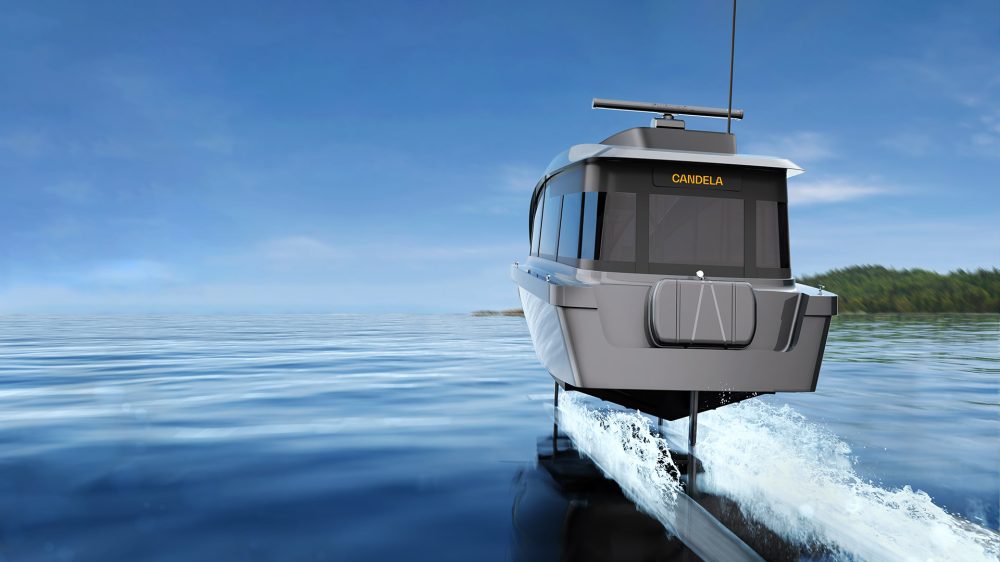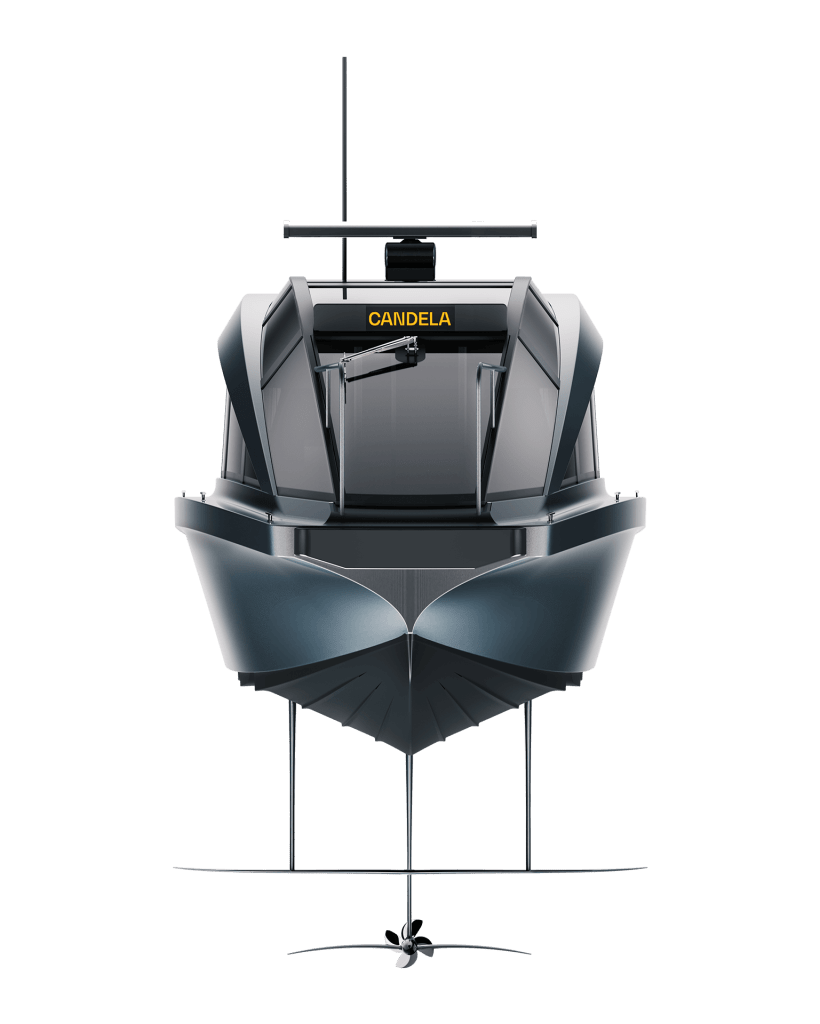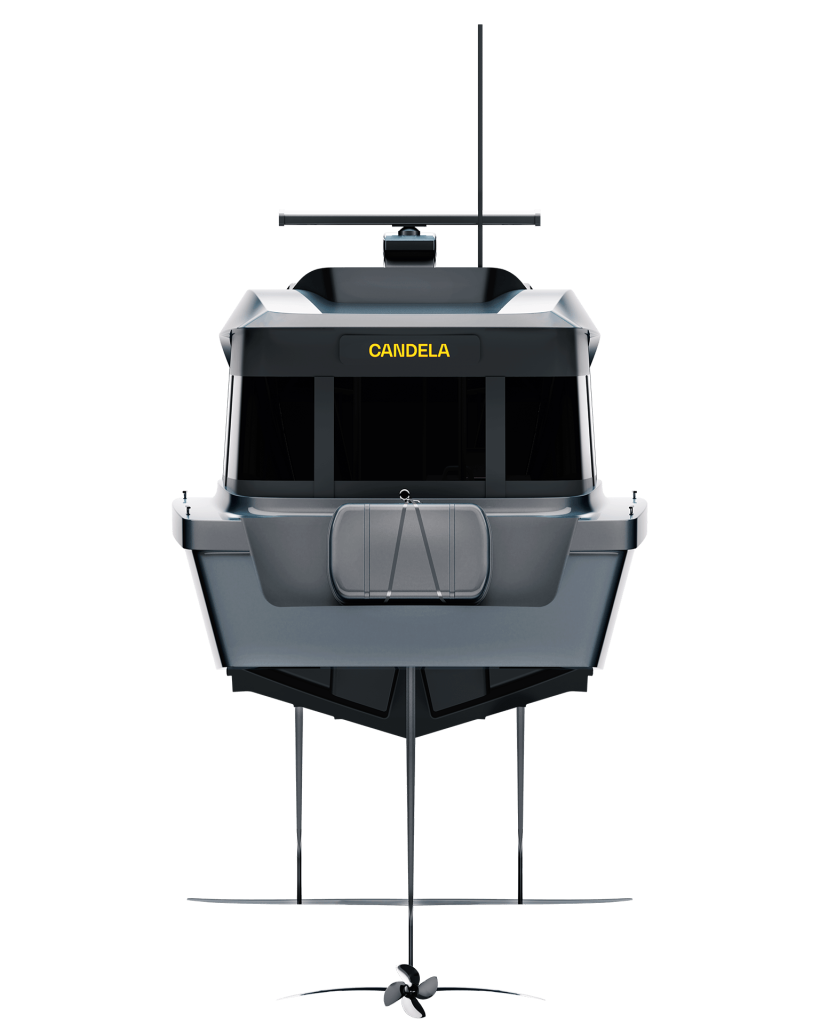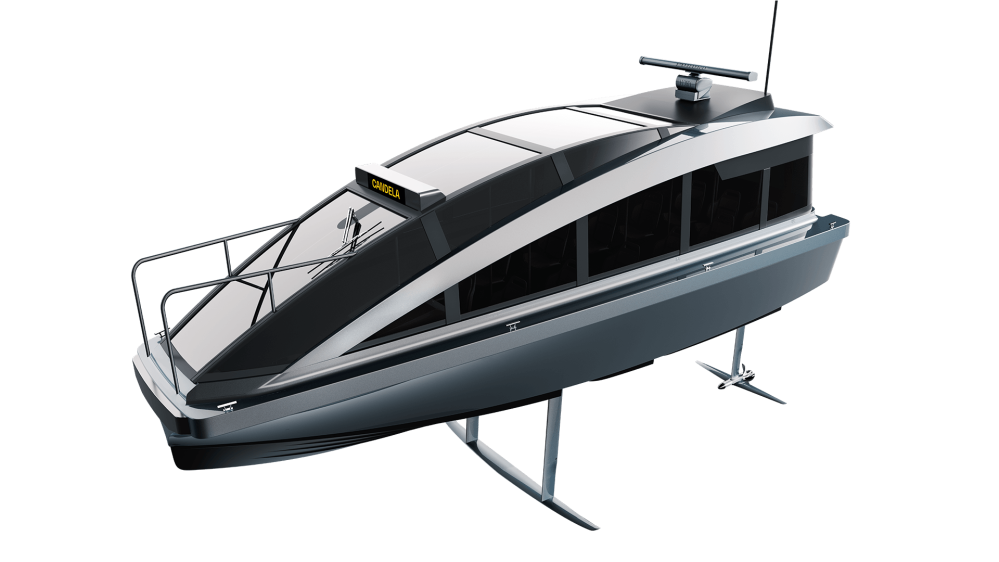
Public transportation just got way cooler. Premium Swedish electric boat maker Candela has just unveiled the new Candela P-12, an electric hydrofoil water taxi.
Designed to replace traditional diesel-powered ferries, the Candela P-12 uses an electric powertrain combined with a carbon fiber hull and hydrofoils to create a super-efficient drive system.
The 8.5 meter (28 foot) water taxi can fit up to 12 passengers in its panoramic-view cabin.
The P-12 also uses the same hydrofoil system already proven in the Candela C-7, the company’s luxury leisure electric boat.
The hydrofoils actually lift the hull of the boat completely out of the water, resulting in the P-12 effectively flying over the surface.
That offers a myriad of advantages, including less energy use, less noise, a smoother ride, and the ability to traverse waters without leaving a wake.
As a result, the boat can travel faster in previously restricted areas where boat wakes could damage vessels or harm marine wildlife.

The Candela P-12 can cruise at 30 knots (55 km/h or 34 mph), and has an autonomy of more than 2 hours at 20 knots (37 km/h or 23 mph).
The boat features DC fast charging that can top off the battery in just an hour. Thus it could theoretically work repeatedly for more than two hours on and one hour off, or a fleet of P-12s could work nonstop.
The gentle ride is made possible both by the hydrofoils themselves and also Candela’s proprietary control system that automatically adjust the foils for the smoothest ride. It’s a pretty amazing sight to see – which you can view for yourself.
The company also says that means “a 95% reduction of wave g-force compared to conventional ships – and the very end of sea sickness.”
I’m absolutely willing to risk my lunch by putting that sea sickness claim to the test.
Candela isn’t just pitching the new boat as a higher performance or more convenient alternative to diesel ferries – they also say it would be cheaper to operate as well.
As the company explained:
“Switching from a combustion engine to an electric boat shouldn’t be a tough decision. With P-12, there’s no trade-off between economy and environment.
One of the big benefits of our hydrofoil technology and proprietary electric drive train is the low operating costs. P-12 consumes 80% less energy than conventional combustion engine water taxis, or in other words, less energy per passenger than a family car. This means that even in markets where fossil fuels are subsidized, P-12 will be considerably cheaper to operate than comparable combustion engine vessels. With a gasoline price of 0,6€ per liter, P-12 will in fact be about 85 percent less expensive to drive.”
The P-12 is expected to be available for delivery by the end of 2022.
If you can’t wait that long, you can still get your feet wet (or perhaps keep them dry) with Candela’s C-7 for just a smidge north of $200,000.
I guess I’ll start saving up.
Subscribe to Electrek on YouTube for exclusive videos and subscribe to the podcast.
Author: Micah Toll
Source: Electrek






